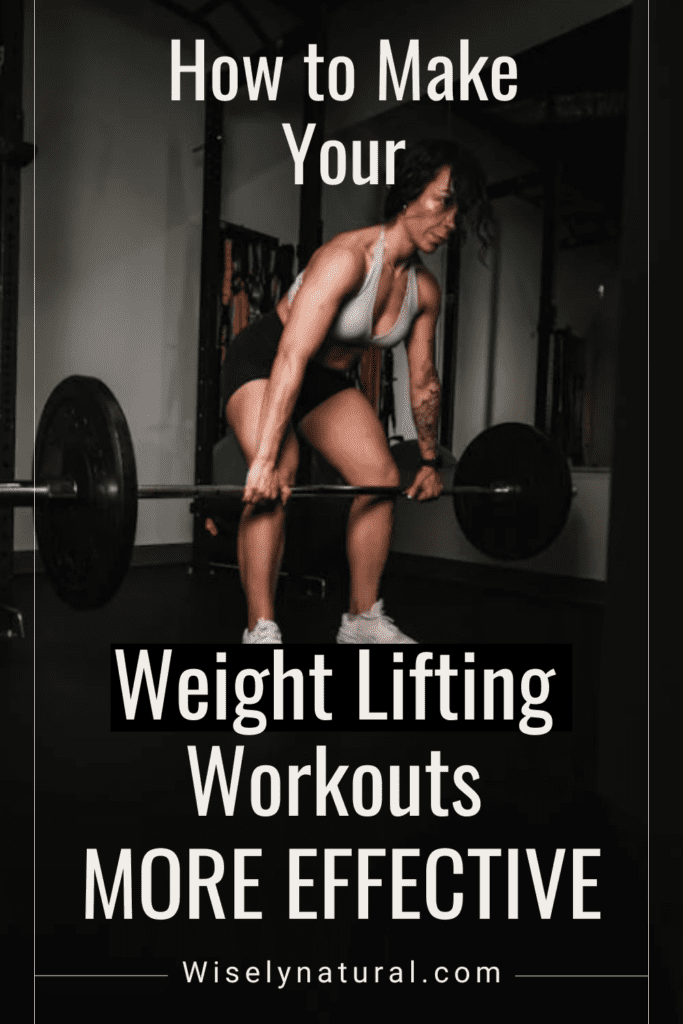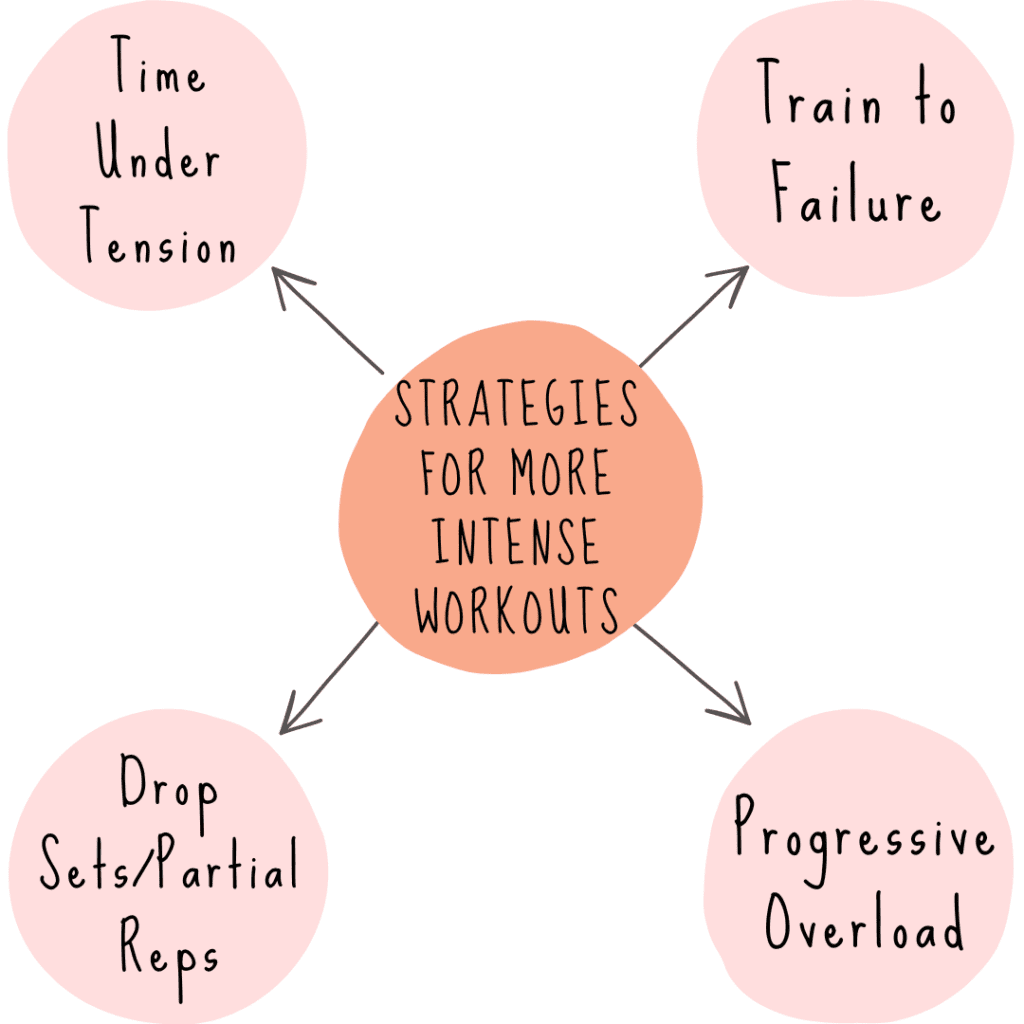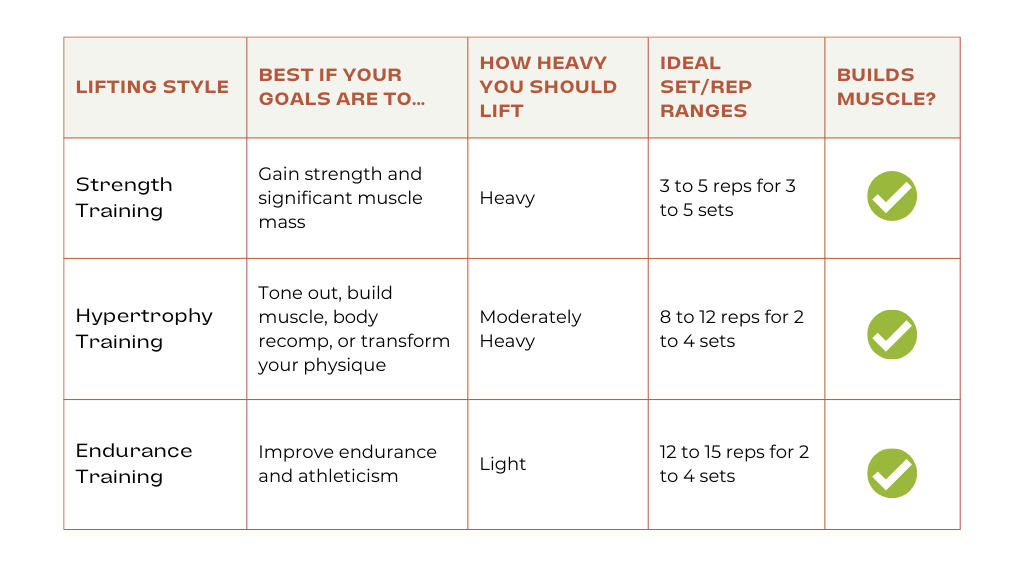
As someone who’s active and works out, having effective workouts is crucial for your gym results.
When you’re first starting a workout routine, your main priority is to just show up.
After all, you can’t start your fitness journey without actually showing up. And at the beginning, this works great.
Initially, any activity more than what you were previously doing makes your workouts effective.
However, since each workout contributes to your overall progress and needs to continue to push you to grow, there comes a point when just showing up isn’t enough anymore.
That’s why, once you progress past a certain point in the gym, it’s important to find ways to keep your workouts challenging and effective.
In this post, I want to cover how to increase the effectiveness of your workouts for optimized training and results.
In This Post You’ll Find:
Why It’s So Important to Have Efficient Workouts
Like I mentioned earlier, once you progress past a certain point in the gym, seeing progressive results becomes more and more challenging.
At the beginning, results come easy. You show up, you put in more effort than your past lifestyle, and you already notice changes.
However, eventually things aren’t as easy.
As your body continues to grow and progress, it requires more and more effort for you to see consistent results.
Mainly because progress requires you to continue challenging your body during your workouts.
So as your body adjusts to your new activity levels, you need to continue progressing these activity levels to give your body something challenging and new to adjust to.
That’s why if you want to continue seeing progress in the gym, you need to find ways to keep your workouts efficient.
Efficient Workouts Contribute to Better Progress
The more efficient your workouts are, the more and better results you’ll see from these workouts.
As someone who strength trains, seeing results in the gym requires you to be correctly stimulating muscle growth.
By making your workouts more efficient, you can maximize the amount of muscle growth you stimulate during each training session.
Who wouldn’t want that? Why wouldn’t you want to maximize the results you can see from each workout?
If you’re spending this time at the gym anyway, you might as well be maximizing the results and progress you can see from your time there.
For example, it’s possible to be consistent in your workout routine, spend hours in the gym each day, and yet still see little to no results from your routine.
The main culprit of this would be that your workouts aren’t efficient or effective and aren’t correctly stimulating muscle growth.
As a result of that, your results aren’t reflecting your efforts. So I don’t want to say that you’re wasting your time at the gym, because no workout is a waste.
However, you are making things a lot harder for yourself by training inefficiently.
Efficient Workouts Allow You to Do Less For More
As with most things in life, the more efficiently you can do something, the less time you can spend doing it.
Well, a similar principle can be applied to your workouts.
If you want to spend less time in the gym but still see the same results, the key is to increase the efficiency of your workouts.
By doing this, you can do less in the gym for more.
Meaning you can see the same, or even better, results by doing less in the gym. But doing it more efficiently.
Avoid Spending Too Long in The Gym
One common gym mistake is thinking that the more time you spend in the gym, the better results you’ll see.
However, the number of hours you spend in the gym doesn’t mean much for your results.
Instead, what matters most is what you do in these hours that you’re in the gym.
For example, focusing on improving the intensity of your workouts and how much muscle growth you stimulate will play a much bigger role in your results than focusing on how long you spend at the gym.
Top Strategies to Make Your Weightlifting Workouts More Effective

Increase the Intensity of Your Workouts for More Efficient Training
The number one best way to make your workouts more effective is to increase the intensity of your workouts.
Not a lot of us realize it, but we often train with a lot less intensity than we should.
But not usually at our own faults though. For starters, not a lot of people actually know what it means to train intensely.
And secondly, the main thing that usually keeps us from training intensely is our minds.
Overcoming Mental Blocks to Train Intensely
The biggest challenge with increasing the intensity of your workouts is overcoming mental blocks.
Because by design, we naturally dislike and avoid discomfort.
So we do everything in our power to keep ourselves comfortable.
In terms of the gym, this might look like stopping a set, rep, exercise, or entire working too early because we were uncomfortable.
Maybe the last rep started to burn too much, or we got too tired or too bored of working out.
Whatever it may be, this is understandable, it’s in our nature as humans.
Unfortunately, though, with strength training, this mindset won’t lead to very much progress or growth.
You need to be uncomfortable in order to grow in the gym!
Because it’s when our reps burn the most, we show up for the difficult workouts, and we push through that last rep that our workouts are most effective.
The Best Strategies to increase the Intensity and Efficiency of Your Workouts
The first step to making your workouts more effective is to increase the intensity of your workouts.
However, not everyone knows what that means or what it looks like.
Here, I want to give you some of the most effective strategies to increase the intensity of your workouts.
Increase Your Time Spend Under Tension
Time under tension is the amount of time you spend during the eccentric portion of an exercise.
Increasing your time under tension is an excellent way to increase the intensity of your workouts.
Doing this helps keep each rep and exercise challenging while also stimulating maximum muscle growth.
I recommend checking out my post time under tension in the gym, what is it? where I talk more about what time under tension is, it’s importance for muscle growth, and how to implement it into your workouts.
Additionally, increasing your time spent under tension is one of the best ways to develop a mind to muscle connection.
A mind to muscle connection allows you to actually feel each individual muscle that you’re training.
This helps you engage, target, and train each muscle more effectively, allowing for even more muscle growth.
Incorporate Training to Failure
Training to failure means that you continue a set until you can’t complete anymore reps with proper form.
And again, it’s another excellent way to increase the intensity of your workouts.
Although it’s very hard for anyone to train entirely to failure, our bodies do a good job preventing us from this.
Mainly because of those mental blocks I was talking about earlier, but also for other reasons as well.
So even though it’s called training to failure, the main goal is to practice pushing yourself closer to failure.
Since hitting actual failure is pretty hard.
Instead, push yourself to continue a set until you feel like your muscles have reached their limit and you can’t push anymore weight.
One thing to remember is the more intensely you train, the more you increase your risk for injuries.
As a result, it’s important to learn how to prevent injuries from working out and keep yourself safer in the gym.
Implement Progressive Overload
Progressive overload is an excellent way to keep your workouts challenging.
By implementing progressive overload as a strategy into your workouts, you ensure that each workout is challenging enough to continue stimulating muscle growth.
Progressive overload means that you progressively “overload” your workouts.
Meaning that you periodically and continuously increase either the weight you lift or the number of reps you do for each exercise in the gym.
What this does is it allows you to continuously keep your workouts challenging.
Since your body has to keep adapting and working to keep up with the increasing intensity of your workouts.
Consider Adding in Drop Sets/Partial Reps
The final strategy to increase the intensity of your workouts is to add in drop sets and/or partial reps.
Drop sets are implemented when you reach failure on an exercise.
What you do is when you reach failure at one weight, instead of stopping your set, you lower the weight and continue the set at that new weight until you reach failure again.
Partial reps are also implemented when you reach failure. However, with partial reps, what you do is when you can’t do anymore full reps of an exercise, you start doing small, mini-reps.
You still maintain proper form of the exercise, but you continue completing a smaller and smaller portion of the entire rep.
As you get more fatigued and these partial reps get more and more partial, you continue until you can’t do any portion of the rep at all.

Rest for Long Enough Between Each Set for Optimized Lifts
How long you rest between each set plays a huge role in the effectiveness of your workout.
Depending on your goals and your style of training, how long you should rest between each rep will vary.
One thing that’s extremely important is to make sure you’re resting long enough between each set.
Although it might seem like shorter rest between sets will make the workout more intense, this isn’t always the case.
Especially if your goals are to gain muscle, your body needs enough rest between each set.
And if you plan to push yourself during each of these sets, you don’t want to go into your next set without having recovered from the previous one.
The Correct Amount of Time to Rest Between Each Set for Maximum Growth
Depending on how long you train, what types of workouts and exercises you do, and what your goals are, your rest time will vary.
However, it’s generally recommended to get anywhere from one to five minutes of rest between each set.
During compound exercises, it’s best to rest about 2 to 5 minutes between each set.
Whereas during isolation exercises, it’s best to rest about 1 to 3 minutes between each set.
The main purpose of resting between sets is to give your body a chance to recover. As well as to let your heart rate return back to normal.
As a result, the best way to determine how long you should rest between your sets is by waiting until your heart rate comes down again.
Once it comes down from your previous set, you’re ready to start your next set.
These strategies allow you to recover appropriately based on how demanding each exercise is for your body.
And go into your next set with as much intensity as you had the previous set.
Lift Heavy Enough to Improve Your Workout Effectiveness
Lifting weight that’s heavy enough is crucial for your workouts to be effective and stimulate muscle growth.
Although I’m sure it’s no surprise, but to build muscle, it’s important that you’re lifting heavy enough.
However, no one ever really tells you what “heavy enough” even means. Making it difficult to determine what weight is heavy enough for you.
But look no further, I wrote a post that goes more in depth on this.
If you aren’t sure what heavy enough means and how heavy is right for you, then I recommend checking out my post how heavy women should lift in the gym [a complete guide].
That way you can start lifting heavy enough during your workouts, increasing the intensity of these workouts, stimulating more muscle growth, and making your workouts more efficient.
Incorporate Enough Sets of Each Exercise to Maximize Workout Efficiency
The final part of any efficient workout is to be doing enough sets of each exercise.
Just like rest time between sets varies, the number of sets you should be doing will also vary from person to person.
Depending on things like each persons training style, goals, and goal rep ranges.
To break things down better, I created a table to better demonstrate how weight, reps, and sets should align with your training style and goals.

Although the table dives more into specifics, I also want to summarize things more generally.
In general, no matter who you are, most people should always be doing at least two sets but never really any more than five sets.
That way, you always ensure you’re doing enough sets for growth, but aren’t doing an unnecessary number of sets.
Almost everyone will fall somewhere in the 2 to 5 set range.
Of course some people may have specific training strategies other than this, and in that case, do what works best for you.
This is just generally what works best for stimulating effective muscle growth in majority of people.
Takeaways
Staying consistent in your workout routine means showing up everyday for each workout. And is key to seeing results in the gym.
However, even though showing up is always important, there comes a time when prioritizing the quality of your workouts becomes a must.
By using these specific strategies, doing things like increasing the intensity of your workouts, monitoring your rest time, and doing enough exercises each session, you can easily increase the quality and effectiveness of your workouts.
Doing this will help you continuously progress in the gym, allowing you to see the most consistent results and avoid hitting any plateaus.
More of My Posts on Women’s Fitness and Weightlifting:
Here’s Why Weightlifting WON’T Make Women Look Bulky
What to Do After Missing a Week of Workouts [A Complete Guide]
Here’s Why Doing More in The Isn’t Always Better [And What to Do Instead]